| Learn foreign words fast for free | Mobil phone freeware | Hobby pages | Sitemap | Feedback |
Galilean telescope
There are two basic types of telescopes: relectors and refractors.
Refractors are based on lens. Most people think that this is only possible type of telescope. In very primitive form, refractors are very easy to build. But due to it's principle they have many optical issues.
Relectors were build in order to avoid optical issues of refractors. Main component is parabolic mirror. Oldes and simplest type of reflectors is Newtonian telescope.
First telescope, used by Galileo, was simple refractor. Today it's not problem to find components for this telescope in shops. It will allow us to see Saturn ring (when Saturn is close to Earth) and we will earn sense of what first astronomers were able to see and what image abot world they could have.
Principle
Primitive refractor consists from two lens, at least. Larger lens is objectiv, smaller lens is eyepiece.Basic attributes of lens are:
- diameter
- focal length
Focal point is point where all light concentrates (when convex lens is used). Focal length is distance of focal point from lens.
Refractor consists of two lens positioned in the way, that they have common focal point:
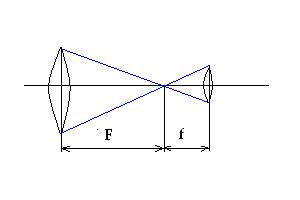
F is focal length of larger lnes (objective).
f is focal length of smaller lens (eye piece).
This refractor provides magnification F/f. Hence, when you have objective lens with focal length F=1000mm and eye-piece lens with focal length f=20mm, then you can have magnification 50x. This magnification will show you Saturn ring.
Another important attribute of objective (larger lens) is it's diameter - it concentrates light into eye pupil. E.g. when your objective has diameter 50mm it's surface is 1962,5 mm2. Your eye pupil may have diameter 8mm, it's surface 50 mm2. It means that your objective concentrates almost 40 times more ligth and allows you to see 40 times fainter objects - Saturn ring is one of them.
Main disadvantage of refractor is that ligth changes angle on glass according it's frequence. It means that each color of light has different focal length. And you can never have sharp picture of all collors and you will see "halo" about observed objects. Manufacturers are able to supress this effect, today, but our telescope built from paper will suffer all these disadvantages.
But at least we will see sky like it was seen by pioneers of astronomy.
Where can we have lens from
Value 1/F (F is in meters) is called "dioptry". Hence lens with focal length 1000mm has 1 dioptry. It is possible to buy glass for eye-glasses in optician shop. with diameter 60mm of 1 dioptry strong.This lens may be used as objective.
Little lens may be taken from toys. I took one from "sky telescope":
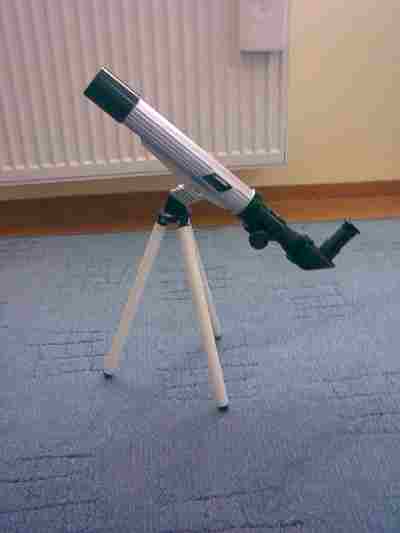 |
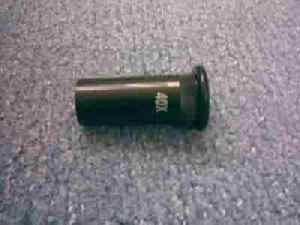 |
There are also divergent lens - they do not concentrate ligth, but diverge. Theese may be used to build refractor, as well. This type of refractor was used Johan Kepler and it's advantage is, that it's image is not reversed and observing angle is larger. Optical scema of Keplerian telscope:
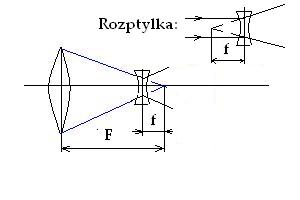
How to make tube
Tube of telescope does not need to be cylider. We can use boxboard
(e.g. used to pack furniture). We have to prepare two pieces of tube,
so that one can be spliped into another one. Total length of both
pieces is to be 1m +/- 20cm. Pulling and pushing pieces of tube will
focus image.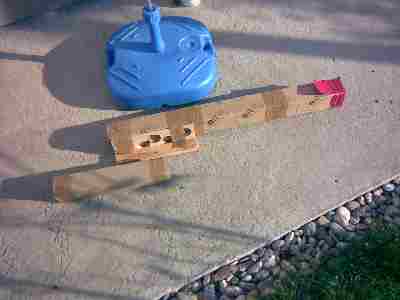 |
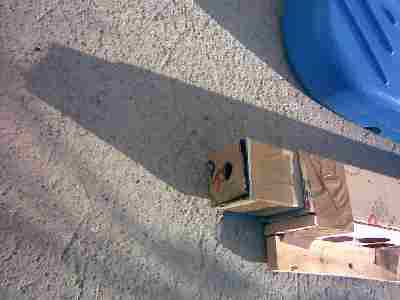 |
Mounting objective
Objective lens will be pasted to boxboard and boxboard will be held to
tube rubber band. 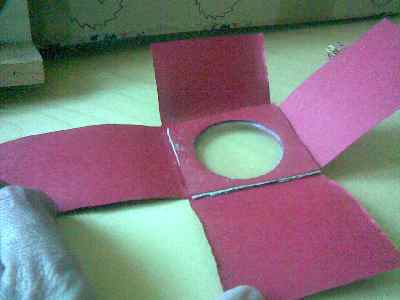 |
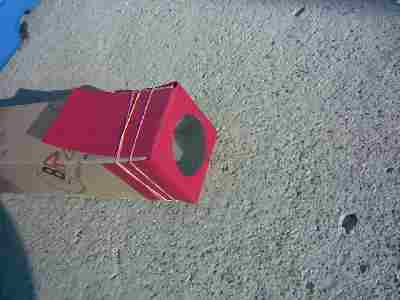 |
Mounting eye-piece
This depends on kind of lens, you can find. Maybe you can use same way
like objective. In my case I used another way: |
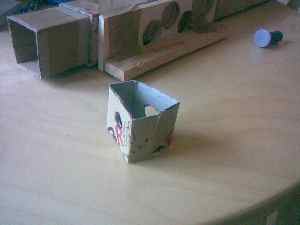 |
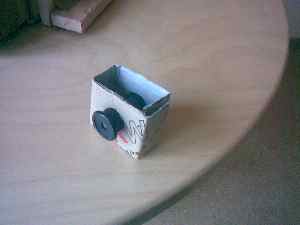 |
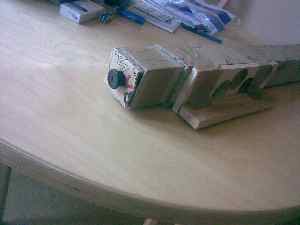 |
"Tripod:
You must have some tripod for this magnification. It's impossible to keep this telescope in hand. Probably simplest "tripod" is "monopod" (turning head on stick): |
 |
 |
Here is schema of "tripod head":
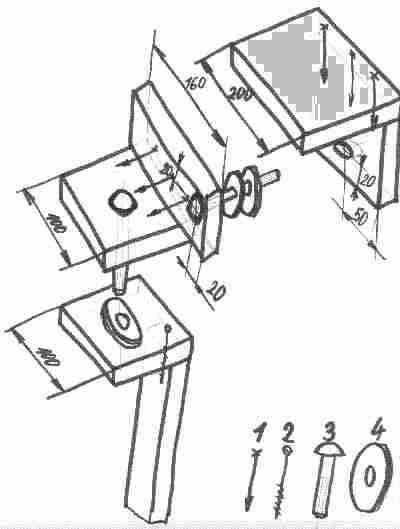
Legend:
1. 6 x nail 50 mm
2. 1 x wood screw 60 mm
3. 2x skrews M10x30
4. 4x plates diameter 11 mm
Not drawn: 2x butterfly nuts M10 with plates
Comments:
- body-tube will laid on "greyed" surface. I used sealing tape to
past body-tube to "tripod head". Of course, sealing tape needs to be in
place earlier then "tripod head" is nailed together.
- Screws are axis for targeting telescope. For simpler targeting
it's better to use butterfly nuts (I don't know to draw butterfly nuts
- that's why I did not draw them :-).. There needs to be plate under
each nut.
- Wooden sirface could rub when you will try to target telescope to star. That's why we need to give two plates in between of two wooden surfaces.
- It's good to have good balanced telescope, so it keeps any
position almost without held. Than soft tight of nut is needed and
there is lower chance that you will move by already targeted telescope.
Monopod (stick) is made of piece of wood 5x5 cm and lenght 150 cm. 3 pieces of stringline can fasten monopod in tent-like way.